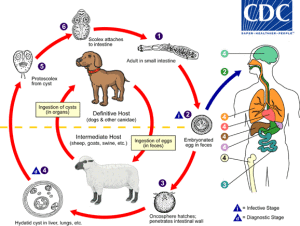An ongoing dialogue on HIV/AIDS, infectious diseases,
August 13th, 2017
Dog-Related Infectious Diseases as an Excuse to Show Pictures of Dogs
For proof that we’re not like other human members of the planet, when ID doctors think of dogs, it sometimes brings to mind one or more of following associations:
- Gastroenteritis due to Campylobacter jejuni. No, there’s nothing cuter in the world than a puppy — but remember that these little critters are particularly predisposed to symptomatic (and asymptomatic) campylobacter infection, and, given our inability to resist picking up puppies and cuddling them, not surprisingly can be the source of human infection as well. Older dogs are less susceptible, so probably best to keep the puppies out of the elder care facilities.
- The wonderfully named bacterium Capnocytophaga canimorsus. This is a rare cause of sepsis after dog bites — in particular in people without spleens, those who consume too much alcohol, and the immunocompromised. A good trivia question for parties is to ask someone the bug’s original name, which was “DF-2”, standing for “Dysgonic fermenter.” Then ask them what “dysgonic” means. Then ask the difference between “DF-2” and “DF-1”. That will make you the life of the party. (For the record, I have no idea what “DF-1” is.)
 Dogs are the “definitive host” of Echinococcus granulosus. This parasitic infection (which can cause nasty cystic lesions in the liver, lungs, and brain) is most common in people who raise sheep, which like humans act as intermediate hosts. But dogs are required to complete the life cycle, and they get infected when they eat discarded meat and internal organs from echinococcus-infected sheep. That might be yuck to us, but it’s no doubt yum to them. Here’s the CDC-approved life cycle diagram, if you don’t believe me.
Dogs are the “definitive host” of Echinococcus granulosus. This parasitic infection (which can cause nasty cystic lesions in the liver, lungs, and brain) is most common in people who raise sheep, which like humans act as intermediate hosts. But dogs are required to complete the life cycle, and they get infected when they eat discarded meat and internal organs from echinococcus-infected sheep. That might be yuck to us, but it’s no doubt yum to them. Here’s the CDC-approved life cycle diagram, if you don’t believe me.- Rabies. (Cue scary music here.) Even though there hasn’t been a human case of rabies linked to a dog bite sustained within the USA in decades, every ID doctor frequently receives calls about dog bites and the risk of rabies. That’s not surprising since 1) dog bites still account for over 90% of human cases world-wide; 2) rabies is nearly 100% fatal, and; 3) there are anti-vaccine crackpots who have spread their nonsense to their dogs. Couldn’t make this stuff up.
Of course that’s hardly the full list — there’s Dipylidium caninum (dog tapeworm), Ancylostoma caninum (dog hookworm), Microsporum canis (ringworm), Brucella canis (transmitted to humans when infected pregnant dogs have spontaneous abortions), and Ehrlichia canis (the cause of ehrlichiosis), just to list those that have the Latin root for dog in their name.
And we could on with several other infections that, in various settings, have been linked to dogs. A true potpourri of zoonoses! There’s giardiasis, Yersinia pestis (yes, that’s the plague), leptospirosis, Pasteurella multocida (though cats really deserve most of the blame for this one) — even MRSA!
Which brings me to the real reason for this post, which is to show three pictures of dogs that struck me as particularly fetching, infectious risks of owning these beasts notwithstanding. First, my friends just got an adorable puppy named Elijah — and here he is.
Second, and just so someone close to me won’t get jealous, here’s a recent picture of a very vigilant Louie, who has clearly spotted some danger in the distance (or maybe just a squirrel).
Third, I happen to work with Francisco Marty, who is not only a remarkable clinician and clinical researcher, but also one extraordinary photographer. And below is proof, entitled “DUMBO’s Dachshund!”
Woof!





I’m really sad to see Staphylococcus intermedius left out: https://www.ncbi.nlm.nih.gov/pmc/articles/PMC3892614/
Good addition to the list!
And how risky to bring these infection-laden creatures into our domiciles.
Paul
And if you want to see some great board-style questions about pet-related illnesses, check out this post from NEJM Knowledge+
https://knowledgeplus.nejm.org/blog/pet-related-diseases-keep-your-patients-healthy/
I find dogs and cats beautiful and wonderful but have never wanted to share my domicile with one. Now I know why. Thanks for helping me feel less like Scrooge.
(Well, I have shared, but only to make the kids happy.)
Tyson and Schroeder are upset that they were not featured.
And let’s not forget about the recent emergence of influenza A viruses in dogs in the USA
https://www.avma.org/KB/Resources/Reference/Pages/Canine-Influenza-Backgrounder.aspx
Don’t forget Cliff the C diff smelling dog. We should all have a dog as part of our ID rounding team (http://www.bmj.com/content/345/bmj.e7396).
Why I have no pets. Had a mostly outdoor cat years ago, but unlike dogs, cats are not cuddly creatures. Sure, they cause terrible infections when they bite or claw you. But sorry dogs carry so many infections. I agree, they are so cute and cuddly…
This article is informative yet because it is so hyper focused and, at times, reporting alarming consequences, it fails to acknowledge the essential truth that our companion pets are considered “family members.”
So, the focus should not imply one should exclude their family members from the household because of their illness or contagious condition.
When your child inevitably acquires head lice, do you excommunicate them from the household?
Hi Roy,
Perhaps my tone has been misinterpreted — I welcome these wonderful quadrupeds into my home, infestations notwithstanding!
Paul
I agree with you, Roy! Well said!
I don’t think dogs generate these diseases by themselves. Maybe we should obliterate all the insects.
Paul,
On first name basis and feel this way since reading your fabulous blog over the past years. It is uplifting, informative and hilarious. As retired professor (UNC School of Medicine), I am fully aware that the trifecta in very rare in educational circles. We need your insights and teaching.
One important point for patients and pets. Many well meaning friends will bring a pet home when a loved one is recuperating from major surgery for company and the lifting of spirits. Domestic pets should not lick any still healing wounds and learned this when post CABG patient was given puppy on return home. Puppy did what it is supposed to do and repetively licked its companions face and healing vein harvest site wounds. Patient developed P multocida bacteremia and despite appropriate antibiotic therapy and subsequently died in septic shock.
Took a licking and didn’t keep ticking! Cover any partially open wounds when you give or get the puppy. Unproven but sensible.
My wife and I were driving our first daughter home with her buggy folded next to her. We turned around to find her eating dog faeces stuck to the wheel of the buggy! Fortunately my Clinical Microbiology colleague examined and cultured the offending encrustation to exclude infectious agents. Harmless salmonellae were found but no Toxocara or other worrying bugs!
Paul,
Love your post! I will share it with my ID colleagues.
Not to forget Blastomycosis…
Deer Doc Sax, Meows wants cats-related infectious diseases for next post. Because cats are better than dogs. –Sincerely Feline Fellow
Nice Article on Puppies. Pets are our asset and I am really enjoyed the article,
Thanks